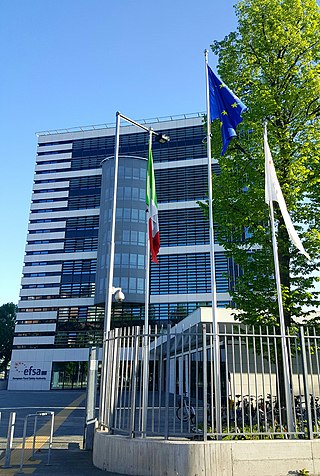
The National Academies of Sciences, Engineering, and Medicine is a congressionally chartered organization that serves as the collective scientific national academy of the United States. The name is used interchangeably in two senses: (1) as an umbrella term or parent organization for its three sub-divisions that operate as quasi-independent honorific learned society member organizations known as the National Academy of Sciences (NAS), the National Academy of Engineering (NAE), and the National Academy of Medicine (NAM); and (2) as the brand for studies and reports issued by the unified operating arm of the three academies originally known as the National Research Council (NRC). The National Academies also serve as public policy advisors, research institutes, think tanks, and public administration consultants on issues of public importance or on request by the government.

Los Alamos National Laboratory is one of the sixteen research and development laboratories of the United States Department of Energy (DOE), located a short distance northwest of Santa Fe, New Mexico, in the American southwest. Best known for its central role in helping develop the first atomic bomb, LANL is one of the world's largest and most advanced scientific institutions.

The National Research Council Canada is the primary national agency of the Government of Canada dedicated to science and technology research & development. It is the largest federal research & development organization in Canada.
The National Highway Traffic Safety Administration is an agency of the U.S. federal government, part of the Department of Transportation. It describes its mission as "Save lives, prevent injuries, reduce vehicle-related crashes" related to transportation safety in the United States.
The impact factor (IF) or journal impact factor (JIF) of an academic journal is a scientometric index calculated by Clarivate that reflects the yearly mean number of citations of articles published in the last two years in a given journal, as indexed by Clarivate's Web of Science.

The Cabinet Office (CAO) is an agency of the Cabinet of Japan. It is responsible for handling the day-to-day affairs of the Cabinet. The Cabinet Office is formally headed by the Prime Minister.

The European Food Safety Authority (EFSA) is the agency of the European Union (EU) that provides independent scientific advice and communicates on existing and emerging risks associated with the food chain. EFSA was established in February 2002, is based in Parma, Italy, and for 2021 it has a budget of €118.6 million, and a total staff of 542.
In many countries, the term principal investigator (PI) refers to the holder of an independent grant and the lead researcher for the grant project, usually in the sciences, such as a laboratory study or a clinical trial. The phrase is also often used as a synonym for "head of the laboratory" or "research group leader". While the expression is common in the sciences, it is used widely for the person or persons who make final decisions and supervise funding and expenditures on a given research project.
CSA was a division of Cambridge Information Group and provider of online databases, based in Bethesda, Maryland before merging with ProQuest of Ann Arbor, Michigan in 2007. CSA hosted databases of abstracts and developed taxonomic indexing of scholarly articles. These databases were hosted on the CSA Illumina platform and were available alongside add-on products like CSA Illustrata. The company produced numerous bibliographic databases in different fields of the arts and humanities, natural and social sciences, and technology. Thus, coverage included materials science, environmental sciences and pollution management, biological sciences, aquatic sciences and fisheries, biotechnology, engineering, computer science, sociology, linguistics, and other areas.

Food safety in China is a concern relating to agriculture in the world's most populated country. China's principal crops are rice, corn, wheat, soybeans, and cotton in addition to apples and other fruits and vegetables. China's principal livestock products include pork, beef, dairy, and eggs. The Chinese government oversees agricultural production as well as the manufacture of food packaging, containers, chemical additives, drug production, and business regulation. In recent years, the Chinese government attempted to consolidate food safety regulation with the creation of the State Food and Drug Administration of China in 2003; officials have also been under increasing public and international pressure to solve food safety problems. Chinese Vice Premier Li Keqiang said, "Food is essential, and safety should be a top priority. Food safety is closely related to people's lives and health and economic development and social harmony," at a State Council meeting in Beijing.
Injury prevention is an effort to prevent or reduce the severity of bodily injuries caused by external mechanisms, such as accidents, before they occur. Injury prevention is a component of safety and public health, and its goal is to improve the health of the population by preventing injuries and hence improving quality of life. Among laypersons, the term "accidental injury" is often used. However, "accidental" implies the causes of injuries are random in nature. Researchers prefer the term "unintentional injury" to refer to injuries that are nonvolitional but often preventable. Data from the U.S. Centers for Disease Control show that unintentional injuries are a significant public health concern: they are by far the leading cause of death from ages 1 through 44. During these years, unintentional injuries account for more deaths than the next three leading causes of death combined. Unintentional injuries also account for the top ten sources of nonfatal emergency room visits for persons up to age 9 and nine of the top ten sources of nonfatal emergency room visits for persons over the age of 9.

José Luis Torero FREng FTSE FRSE FRSN is the Head of the Department of Civil, Environmental and Geomatic Engineering at University College London. He took this appointment after two years (2017-2019) as the John L. Bryan Chair in the Department of Fire Protection Engineering and Director of the Center for Disaster Resilience in the Department of Civil and Environmental Engineering at the University of Maryland (USA). He was formerly the Head of the School of Civil Engineering at the University of Queensland (2012-2017). He is Fellow of the Royal Academy of Engineering (UK) since 2010, the Australian Academy of Technological Sciences and Engineering since 2014 and The Royal Society of Edinburgh (UK) since 2008. He held the BRE/RAE Chair in Fire Safety Engineering and directed the BRE Centre for Fire Safety Engineering from 2004 to 2012. In 2018 he was elected a Fellow of the Royal Society of New South Wales, being gazetted in the NSW Government Gazette by the then Governor of New South Wales His Excellency General, the Honourable David Hurley AC DSC(Rtd).
The Scandinavian Journal of Work, Environment & Health is a bimonthly peer-reviewed open-access medical journal. It covers research on occupational and environmental health and safety. It is published by the Nordic Association of Occupational Safety and Health. Occasionally the journal publishes supplementary issues. It was established in 1975 and the editors-in-chief are Alex Burdorf and Reiner Rugulies.

The Journal of Occupational Health Psychology is a peer-reviewed academic journal published bimonthly by the American Psychological Association. It "publishes research, theory, and public policy articles in occupational health psychology, an interdisciplinary field representing a broad range of backgrounds, interests, and specializations. Occupational health psychology concerns the application of psychology to improving the quality of work life and to protecting and promoting the safety, health, and well-being of workers." The current editor-in-chief is Sharon Clarke, PhD.

The Journal of the National Cancer Institute (JNCI) is a peer-reviewed medical journal covering research in oncology that was established in August 1940. It is published monthly by Oxford University Press and is edited by Patricia A. Ganz. It was merged with Cancer Treatment Reports in January 1988. JNCI used to be the official journal of the National Cancer Institute (NCI); however, in 1996, the NCI and JNCI agreed to grow apart. Over the next five years, JNCI became independent of the NCI.

Food Science and Technology International is a bi-monthly peer-reviewed academic journal that publishes scholarly articles in the field of food science. The journal was established in 1995, and is currently published by SAGE Publications in association with the Spanish Council for Scientific Research (CSIC).
BioMed Research International is a peer-reviewed open access scientific journal covering all aspects of biomedical sciences. It was established in 2001 as the Journal of Biomedicine and Biotechnology with Abdelali Haoudi as first editor-in-chief. The journal obtained its current title in 2013 and is published by Hindawi Publishing Corporation.

Health Physics is a monthly peer-reviewed medical journal published by Lippincott Williams & Wilkins. Its scope includes research into radiation safety and healthcare applications. It is the official journal of the Health Physics Society. It was established in 1958 and it is edited by Brant Ulsh.
Vishweshwaraiah Prakash is an Indian structural biologist, food technologist and a former director-general designate of the Council of Scientific and Industrial Research (CSIR). He is a former director of the Central Food Technological Research Institute (CFTRI), Mysore and was involved with the International Union of Food Science and Technology as the chairman of its International Academy during 2008-10. He received the Shanti Swarup Bhatnagar Prize, the highest Indian award in the science and technology category in 1996. The Government of India awarded him the fourth highest civilian honour of the Padma Shri in 2004,
Traffic Injury Prevention is a bimonthly peer-reviewed academic journal covering the prevention of injuries resulting from traffic accidents. It was established in 1999 as the Journal of Crash Prevention and Injury Control, obtaining its current name in 2002. It is the official journal of the Association for the Advancement of Automotive Medicine, the International Traffic Medicine Association, the International Research Council on the Biomechanics of Impact, and the International Council on Alcohol Drugs and Traffic Safety. The editor-in-chief is David C. Viano. According to the Journal Citation Reports, the journal has a 2014 impact factor of 1.413, ranking it 95th out of 162 journals in the category "Public, Environmental & Occupational Health".










